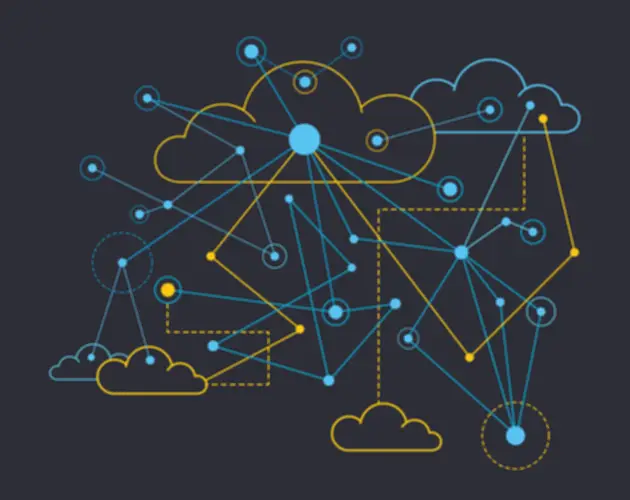Introduction To Recurrent Neural Networks
Tasks like sentiment evaluation or text classification often use many-to-one architectures. For instance, a sequence of inputs (like a sentence) may be classified CSS into one class (like if the sentence is taken into account a positive/negative sentiment). In a feed-forward neural network, the knowledge only strikes in a single path — from the enter layer, by way of the hidden layers, to the output layer.

What Are Recurrent Neural Networks?
Here is a simple instance of a Sequential mannequin that processes sequences of integers,embeds each integer into a 64-dimensional vector, then processes the sequence ofvectors utilizing a LSTM layer. Schematically, a RNN layer makes use of a for loop to iterate over the timesteps of asequence, while sustaining an internal state that encodes information about thetimesteps it has seen up to now rnn applications. The output looks extra like real textual content with word boundaries and a few grammar as properly. So our child RNN has staring studying the language and able to predict the following few words.
- A feed-forward neural network assigns, like all different deep learning algorithms, a weight matrix to its inputs after which produces the output.
- The algorithm works its way backwards through the assorted layers of gradients to search out the partial spinoff of the errors with respect to the weights.
- To course of sequential knowledge (text, speech, video, and so on.), we could feed the data vector to a regular neural community.
- But much like common approximation theorems for neural nets you shouldn’t read too much into this.
- The RNN is trained with mini-batch Stochastic Gradient Descent and I like to make use of RMSProp or Adam (per-parameter adaptive studying rate methods) to stablilize the updates.
Step 3: Create Sequences And Labels
The following code provides an example of tips on how to construct a custom RNN cell that acceptssuch structured inputs. Under the hood, Bidirectional will copy the RNN layer passed in, and flip thego_backwards field of the newly copied layer, so that it is going to process the inputs inreverse order. Normally, the inner state of a RNN layer is reset every time it sees a brand new batch(i.e. every sample seen by the layer is assumed to be independent of the past). When processing very lengthy sequences (possibly infinite), you could want to use thepattern of cross-batch statefulness.
Advantages And Disadvantages Of Rnn
This permits the network to seize long-term dependencies extra effectively and significantly enhances its capability to be taught from sequential information. LSTM has three gates (input, neglect, and output) and excels at capturing long-term dependencies. The information in recurrent neural networks cycles by way of a loop to the middle hidden layer. All of the inputs and outputs in commonplace neural networks are unbiased of each other.
The course of often entails forward propagation to compute predictions and backward propagation to replace the model’s weights utilizing optimization algorithms like Stochastic Gradient Descent (SGD) or Adam. RNNs are significantly adept at handling sequences, corresponding to time sequence information or textual content, because they course of inputs sequentially and preserve a state reflecting past information. This algorithm is recognized as backpropagation by way of time (BPTT) as we backpropagate over all earlier time steps. Bidirectional RNNs process inputs in both ahead and backward instructions, capturing both past and future context for each time step.
FNN takes inputs and course of every input independently through a variety of hidden layers without considering the order and context of other inputs. Due to which it’s unable to handle sequential data successfully and capture the dependencies between inputs. To address the constraints posed by traditional neural networks, RNN comes into the image.

They enhance accuracy and interpretability, especially in long sequences. Combining RNNs with other models, just like the convolutional neural community model CNN-RNN or Transformer-RNN, Artificial Neural Networks ANN-RNN, might additional enhance performance for time sequence duties. In a RNN, every time step consists of units with a set activation operate.
Early RNNs suffered from the vanishing gradient drawback, limiting their ability to study long-range dependencies. This was solved by the long short-term memory (LSTM) variant in 1997, thus making it the standard architecture for RNN. LSTM is a well-liked RNN structure, which was introduced by Sepp Hochreiter and Juergen Schmidhuber as an answer to the vanishing gradient drawback.
Gradient clipping It is a method used to cope with the exploding gradient drawback generally encountered when performing backpropagation. By capping the maximum worth for the gradient, this phenomenon is controlled in practice. We outline the enter text and determine unique characters within the textual content, which we’ll encode for our model. The cell abstraction, along with the generic keras.layers.RNN class, make itvery simple to implement customized RNN architectures for your research.
RNNs process data points sequentially, permitting them to adapt to modifications within the enter over time. This dynamic processing capability is crucial for functions like real-time speech recognition or reside financial forecasting, where the model wants to regulate its predictions based mostly on the latest data. In a nutshell, the issue comes from the reality that at each time step throughout coaching we’re using the same weights to calculate y_t. The additional we transfer backwards, the bigger or smaller our error signal becomes. This implies that the network experiences issue in memorising words from distant within the sequence and makes predictions based mostly on only the most recent ones.
Within BPTT the error is backpropagated from the last to the primary time step, whereas unrolling all the time steps. This permits calculating the error for every time step, which allows updating the weights. Note that BPTT may be computationally costly when you could have a excessive number of time steps.
Seasonality and development elimination help uncover patterns, whereas choosing the right sequence size balances short- and long-term dependencies. Researchers have introduced new, superior RNN architectures to overcome issues like vanishing and exploding gradient descents that hinder learning in lengthy sequences. LSTMs introduce a fancy system of gates (input, overlook, and output gates) that regulate the move of information. These gates decide what data ought to be kept or discarded at every time step.

Used by Microsoft Clarity, Connects multiple web page views by a user right into a single Clarity session recording. Ever surprise how chatbots understand your questions or how apps like Siri and voice search can decipher your spoken requests? The secret weapon behind these impressive feats is a kind of artificial intelligence called Recurrent Neural Networks (RNNs). We rely on information to inform decision-making, drive innovation, and keep a competitive edge. However, information just isn’t static, and over time, it could undergo vital adjustments that impression its quality, reliability, and usefulness.
Time sequence data evaluation includes figuring out varied patterns that provide insights into the underlying dynamics of the information over time. These patterns make clear the tendencies, fluctuations, and noise current in the dataset, enabling you to make informed selections and predictions. Let’s discover some of the prominent time collection patterns that help us decipher the intricate relationships inside the data and leverage them for predictive analytics. They employ the identical settings for every input since they produce the same consequence by performing the same task on all inputs or hidden layers.
Transform Your Business With AI Software Development Solutions https://www.globalcloudteam.com/ — be successful, be the first!
